Updated June, 2025
As a culture we enjoy a rich verbal component to our worship. We read Scripture, offer praise and petition, listen to sermons, and share our celebrations and concerns. Some of us are more comfortable using words to express our response in worship, while others are more at ease with images (see the article “A Creative Communion” by Eric Nykamp, p. 18.)
In the spring of 2010, Hessel Park Church engaged in a Visual Imagery Project in which we were invited to pay attention to the nonverbal visual images that are a part of our response to “hearing the Word.” As imagebearers of God, we were challenged to explore visual creativity as an expression of this “imageness” of God.
In the fall of 2009 our faculty and graduate student book discussion group read Desiring the Kingdom: Worship, Worldview, and Cultural Formation by James K. A. Smith (Baker Academic, 2009). Smith, a professor of philosophy at Calvin College in Grand Rapids, Michigan, argues (contrary to much Reformed thought) that humans are more fundamentally emotive creatures than cognitive creatures—we follow our hearts and what we love more than our minds and what we think. Advertisers know better than the church that we are moved and shaped by images, sounds, and smells, and marketers are effective at orienting our desires. For the church to reorient our desires toward the kingdom of God, we must engage more than our cognitive minds with worship.
Our discussions led Ellen Keister, a Ph.D. student in physics, to recall a project her mother, Katie Keister, led in her church in Washington, D.C. She asked the council if she could implement a similar project at our church. Thus was born the Visual Imagery Project.
Ellen began by leading our adult education class in a discussion of Smith’s book and by introducing them to the project. The aim was to encourage members of the congregation to reflect on each week’s sermon and to engage it at a foundational, noncognitive level through images.
The class began reflecting on Pastor Tim’s Lenten sermons, which centered on the theme of God as our shelter. They were then encouraged to decorate tiles made of
8" x 8" foam board using whatever material they desired (fabric, paint, pictures from magazines—all were provided) as a visual response and engagement with the sermon.
We opened the project up to the whole congregation on Easter, when Pastor Tim began a series on the book of Revelation with the overall theme of “our hope for the coming kingdom.” We usually follow the Common Lectionary, and Revelation seemed to offer fertile ground for visual images, but this project could be easily transferred to almost any biblical theme or sermon series. Each week congregants were encouraged to make tiles in response to the sermon. A handout was placed in the bulletins (see sidebar below) to help us process our noncognitive responses—a new and challenging exercise for many. Ellen also organized a tile-making workshop after one of the services, in which a number of people stayed to make tiles. Halfway through the season the tiles were placed on the wall behind the pulpit. Additional tiles were added as they were made. The tiles were arranged to create a mosaic of images that resembled the River of Life from the final reading in Revelation.
The Visual Imagery Project was not about doing “Art with a capital A,” which is a scary word for some. We wanted to create a space for the congregation to make visual representations of our nonverbal responses to the hope portrayed in the sermons and the Scripture readings, thus celebrating our role as imagebearers of God. In this way the whole congregation, from children to adults, including the artistically challenged, were involved in new and illuminating ways.
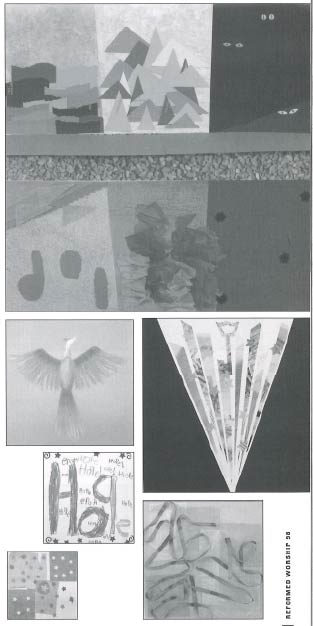
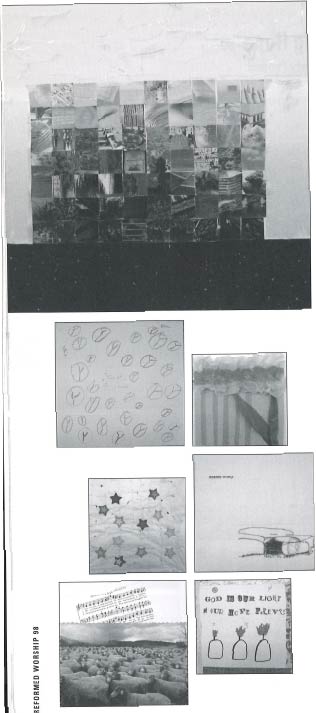
Week 1
Easter: Joy Incarnate
Scripture: Isaiah 65; 1 Corinthians 15
The middle-class American Dream is enticing. There is something right and true, even biblical, about each family owning a home and earning their own living in freedom. In it we hear echoes of Isaiah: “They will build houses and dwell in them; they will plant vineyards and eat their fruit” (65:21).
But Isaiah’s vision of the age to come goes much deeper than our individualistic consumer-driven dreams of North America. Isaiah sees an age when the curses of Eden are reversed. No longer will there be the curse of death: “Never again will there be in it infants who live but a few days, or older people who do not live out their years” (v. 20); Adam’s curse of hard labor: “They will not labor in vain”; or Eve’s: “nor will they bear children doomed to misfortune” (v. 23). Instead there will be economic justice
(v. 21) and even peaceful relationships between humans and the animal kingdom (v. 25). Isaiah’s vision is truly beautiful, for it encompasses all of creation. After plumbing the depths of what is truly wrong with humanity, it paints a picture of the shalom we hope for. According to Paul, we are given a foretaste of this shalom and the new creation in the resurrection of Jesus (1 Cor. 15).
Song Suggestions
“Christ the Lord Is Risen Today” Wesley
“We Know That Christ Is Raised” Geyer
“Praise the Lord, Rise Up Rejoicing” Gaunt
Week 2
A Star in Hand
Scripture: Revelation 1:9-20
The book of Revelation was designed to give hope to the beleaguered churches in and around Ephesus. The seven churches were beset by a variety of trials and temptations. Some were tempted to give in to the surrounding culture and worship Caesar as Lord—Pergamum was the center of the Imperial cult in the region. Others were tempted to be more “Jewish,” a religion tolerated by the Romans, so as to avoid persecution. Others seemed to have lost spiritual vitality and their ministries became ineffectual.
How are we tempted to appear “less Christian” and more like our culture? How often is our zeal for God lackluster and our ministries “lukewarm”? To these seven churches and to us, John provides an image of hope: Jesus Christ—depicted as the Son of Man, dressed as the High Priest, and declared to be on par with God himself (“I am the First and the Last”)—holding his churches in the palm of his hand (v. 20).
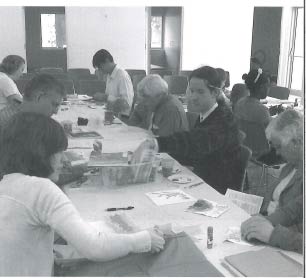
Song Suggestions
“Halle, Halle, Hallelujah” Haugen
“Rejoice, the Lord Is King” Wesley
“Send Me, Lord” Unknown
Week 3
The Lamb upon the Throne
Scripture: Revelation 5
When Neil Armstrong took his first steps on the moon, he famously said, “That’s one small step for man; one giant leap for mankind.” We tend to think that the history of humankind progresses through our technological and scientific advances. The more we know about and control the natural world, the further we progress down the road of history.
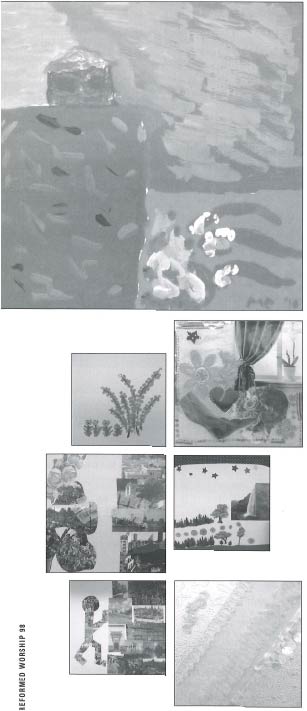
In his Revelation vision, John is in the throne room of God. He sees a scroll in the hand of the One on the throne. When an angel’s cry for someone worthy to open the scroll goes unanswered, John weeps. He weeps, for the scroll and its seals represent the movement of cosmic history. If no one can open the scroll, humanity and the whole creation will be stuck in all its brokenness and sinfulness. But then one of the elders cries out that there is someone worthy to open the scroll—the Lion of the tribe of Judah, the Son of David, the Messiah. John looks up, expecting to see a warrior king, but he sees a lamb, a lamb looking as if it had been slain. The history of the world moves forward, not through intellectual prowess or military power but through a moral accomplishment: the love of God made incarnate through Jesus’ sacrifice on the cross, through the love of the Lamb upon the throne.
Song Suggestions
“Hail, O Once-Despised Jesus” Bakewell
“Great Is the Lord” Smith
“Crown Him with Many Crowns” Bridges (st. 1,3), Thring (st. 2)
Week 4
Blood-Whitened Robes
Scripture: Revelation 7
John depicts the church in this age as going through another exodus as images of the first exodus and the return from exile fill chapter 7. We remember Moses numbering the people at Sinai and Ezra numbering those returning from exile in Babylon. The proclamation “Never again will they hunger; never again will they thirst. The sun will not beat upon them, nor any scorching heat” (v. 16) resounds. The promise that the Lamb will be their Shepherd recalls the prophets’ assurances that one day God will lead the people back to their land.
Just as the people of Israel washed their robes before they received the covenant at the foot of Mount Sinai, so God assures the church in this age that they have had their robes washed in the blood of the Lamb. As we, therefore, await the coming of the new promised land—the new Jerusalem, the kingdom of God—we may feel as though we are in the wilderness. But we travel with the assurance that God has numbered us among his saints and that he will guide us until our true home comes to us.
Song Suggestions
“Soon and Very Soon” Crouch
“Savior, Like a Shepherd Lead Us” Unknown
“Here from All Nations” Unknown
Week 5
Dressed as a Bride
Scripture: Revelation 21:1-8
A few years ago, a stunningly successful ad campaign for Nike shoes urged us to “Just do it.” Nike comes from the Greek word for (and goddess of) victory. Of the twenty-eight times the word is used in the New Testament, John uses it seventeen times in Revelation. In verse 7 the One seated on the throne says, “Those who are victorious [those who overcome] will inherit all this.” Similar urgings litter the seven letters to the seven churches.
The whole book, in effect, is a call to the churches to “Just do it”—to overcome. Reformed folk bristle at such talk; are we not saved by grace alone? But how does John teach us that the church overcomes? “By the blood of the Lamb and by the word of their testimony” (12:11). The church overcomes by following in the steps of the Lamb who was slain, who is also the “faithful witness” (1:4). The church overcomes through the witness of our words and our sacrificial living. The church is able to overcome because “God’s dwelling place is now among the people” (21:3) and because it is being dressed as a beautiful bride prepared for her husband.
Song Suggestions
“This Joyful Eastertide” Woodward
“Alleluia, Alleluia! Give Thanks” Fishel
“My Faith Looks Up to Thee” Palmer
Week 6
Clear as Glass
Scripture: Revelation 21:9-21
John’s visionary guide says to him, “Come, I will show you the bride, the wife of the Lamb” (v. 9). This echoes an earlier call to see the bride’s rival or parody: “Come, I will show you the punishment of the great prostitute” (17:1). The Holy City of Jerusalem is thus compared to the evil city of Babylon.
While the “prostitute” is gaudily dressed “in purple and scarlet” and “glittering with gold, precious stones and pearls” (17:4), the “Holy City” is simply “prepared as a bride beautifully dressed for her husband.” In chapters 17 and 18 the vision John sees demonstrates that the prostitute can afford to dress in such finery for she oppresses the saints (17:6) and colludes with the kings and merchants of the earth (18:3) in unjust economic practices (18:11-13). In contrast, the Holy City is a city not of exclusion and oppression, but of inclusion and welcome. There are three gates on each of the four sides of the city to welcome people from every corner of the globe. The city itself is made of “pure gold, as pure as glass” (21:18), representing its moral purity; it has no injustice or oppression to hide. Lifting the veils of the prostitute and the bride, John encourages the churches to hold fast in hope to the image of what God is making them to be.
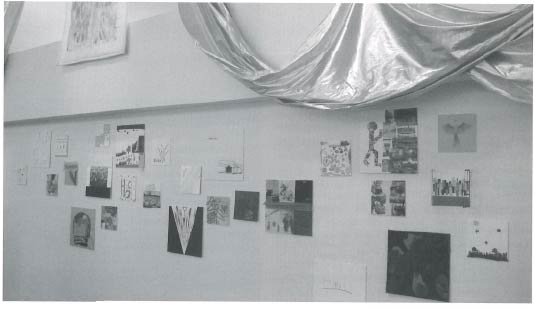
Song Suggestions
“Come, You Faithful, Raise the Strain” John of Damascus
“Jonah’s Song” Bajema
“Jerusalem the Golden” Cluny
Week 7
The Everlasting Day
Text: Revelation 21:22-22:5
The church in Thyatira lived within the major center of the cult of the sun god Apollo, also known as Helios. The nearby city of Ephesus became the major center of the cult of Apollo’s twin sister, the moon goddess Artemis, also known as Selene. The Temple of Artemis/Selene, one of the Seven Wonders of the ancient world, was said to be the first building made completely of marble. One ancient commentator wrote, “Apart from Olympus, the Sun never looked on anything so grand.”
Temples in the ancient world were often the main architectural attraction of major cities, but when John’s guide takes John from a tour of the outer works of the city (21:9-21) to an inside tour (21:22-22:5), we are shocked to find that John “did not see a temple in the city, because the Lord God Almighty and the Lamb are its temple” (v. 22). John drives the point home to the churches in Thyatira and Ephesus: “The city does not need the sun [helios] or the moon [selene] to shine on it, for the glory of God gives it light, and the Lamb is its lamp” (v. 23). Continuing the allusion to the creation story in Genesis, John’s vision brings the whole of Scripture to its final conclusion: while the creation began in chaos, it will end in complete shalom: “On no day will its gates ever be shut. . . .” While it began in darkness, it will end in an everlasting day: “for there will be no night there” (v. 25).
Song Suggestions
“This Is the Day” Unknown
“Joy to the World” Watts
“The King Shall Come When Morning Dawns” Unknown
| Desire | Anticipation | Despair |
| Peace | Faith | Fear |
| Contentment | Optimism | Trial |
| Expectation | Trust | Struggle |
| Waiting | Assurance | Pessimism |
| Confidence | Promise |
